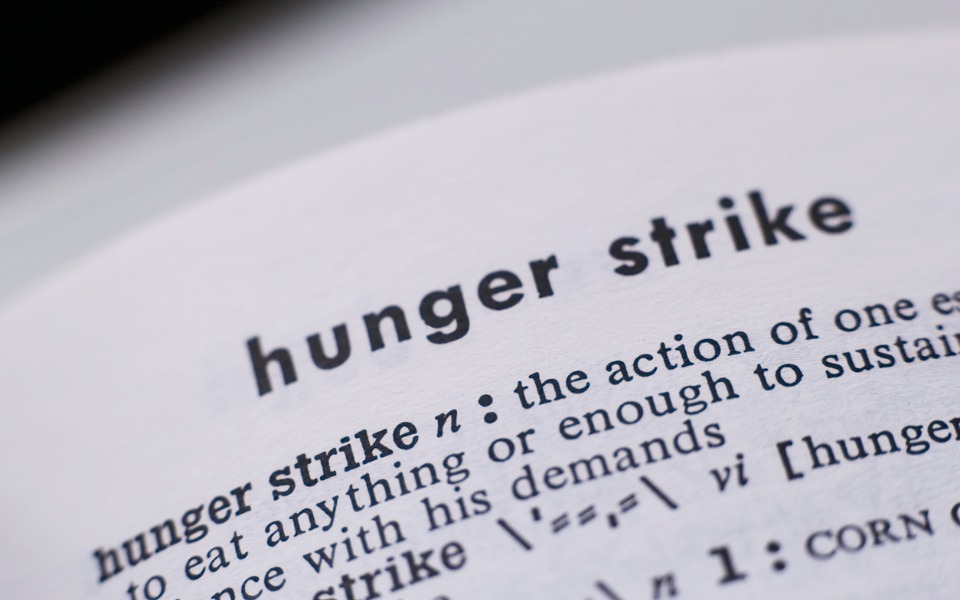
Kerala's endosulphan victims: Spotlight on case as activist’s hunger strike enters day 6

The unending misery of endosulphan victims in Kasargod district is back in limelight once again with Dayabhayi starting a hunger strike at Thiruvananthapuram. Today is the sixth day (October 7) of hunger strike by Dayabhayi (Mercy Mathew), a social activist born and brought up in Kerala who moved to central India working among the tribal communities in Madhya Pradesh and other states. She is sitting on strike right in front of the secretariat demanding justice for the endosulphan victims.
Over 20 years of aerial spraying of endosulphan pesticide in the cashew plantations in Kasargod — that began in 1978 — came to a halt in 2001 when it was banned by the Kerala government. The Stockholm convention banned the pesticide ten years later in 2011.
Also read: Endosulfan victims of Palakkad ignored, years after stored pesticide leak
Ban after NIOH study
The ban in 2001 came after epidemiological studies conducted by National Institute of Occupational Health (NIOH) established a direct link between endosulphan and various health issues in the region like neurological disorders, physical deformities, mental illness and other abnormalities.
In 2017, the Supreme Court ordered the Kerala government to provide within three months compensation amounting to Rs 500 crore to 5,000 victims. The court also issued a direction to the state government to establish treatment facilities for the victims.
The activists working for the rights of endosulphan victims allege that the government has not yet carried out the Supreme Court’s order completely and is also trying to bring down the number of endosulphan victims.
Dayabhayi’s four demands
It is in background that Dayabhayi started her hunger strike and put forward four demands:
- The state government should include Kasargod district in the proposal being sent to the Centre for establishing AIIMS in Kerala. At present Kozhikode, Ernakulam, Kottayam and Thiruvananthapuram are the districts prioritised by the state government for this.
- The four major hospitals in Kasargod — the Medical College, District Hospital, General Hospital and TATA hospital — do not have sufficient facilities for the treatment of endosulphan victims. The government should take action in this regard.
- Day-care homes for the victims have to be established across all local bodies in the affected localities. The bed-ridden and the mentally challenged people because of endosulphan pesticide should get special care in these homes
- The government should organise medical camps to identify more victims and should include them in the list prepared by the district administration.
“These are very reasonable demands. The government is trying to bring down the number of victims because each victim is entitled to get a compensation of Rs 5 lakh. This is the reason the government has stopped medical camps for identifying victims,” says Ambalathara Kunjikrishnan, the convenor of the action committee for endosulphan, who is on strike with Dayabhayi.
Conflict over numbers
So far, there are 6,728 individuals listed by the government who are the victims of the application of the pesticide. According to the Action Committee for the Victims of Endosulphan, the actual number would be more than double.
“The actual number of victims would be between 15,000 to 20,000 across two-three generations. The government organised a medical camp in 2010 and listed 4,150 victims. In the same year, the National Human Rights Commission (NHRC) ordered that the government provide Rs 5 lakh to the bed ridden, mentally challenged and other victims suffering from acute deformities. Since then, the government has taken no interest in organising medical camps,” Kunjikrishnan told The Federal.
“In 2013, another camp was organised, which was a result of agitations raised by the protest committee. Around 10,000 people suffering from neurological disorders and mental illness participated in the camp of which 3,000 were children,” he said.
However, only 348 persons were included in the official list of the district administration. “In 2013, it was also decided that medical camps would be organised every year, but it did not happen,” says Kunjikrishnan. In 2017 too a camp was organised after continuous pressure and agitations by the committee, according to Kunjikrishnan. Only 257 persons were then listed as victims of endosulphan who were eligible for compensation.
“The officials who organised the camp told us that not less than 1,900 persons were identified as victims, but when the list came, there were only 257,” Kunjikrishnan alleged.
Also read: Why use of weedkiller glyphosate should be restricted
He alleged that the government has been trying to bring down the numbers gradually. In 2019, the affected families conducted a dharna in front of the secretariat and 511 more victims were included in the list. Now the Action Committee is again on strike, this time lead by Dayabhayi, the 82-year-old activist, who stands for the rights of the tribals and the downtrodden masses.
From nun to an activist
Dayabhayi, born in an affluent Christian family in Kerala, chose to become a nun and moved out of Kerala. She worked in the remote villages of Madhya Pradesh, Jharkhand and Bihar and later quit her association with the church. She lived among the tribal people in Madhya Pradesh, Bihar, Jharkhand and Haryana and organised them and trained them to do collective bargaining. Dayabhayi now lives in Barul village of Madhya Pradesh’s Chindwara district, where she established a school for tribal children. She is a frequent visitor to Kerala and a participant in people’s movements.
On the third day of the hunger strike (October 4), the cops forcefully removed her from the venue and admitted her to a hospital. However, Dayabhayi came back to the protest venue after she was released a day later. She told the media that she would not end the strike unless the government takes a favourable decision regarding the demands raised by her and the action committee.

